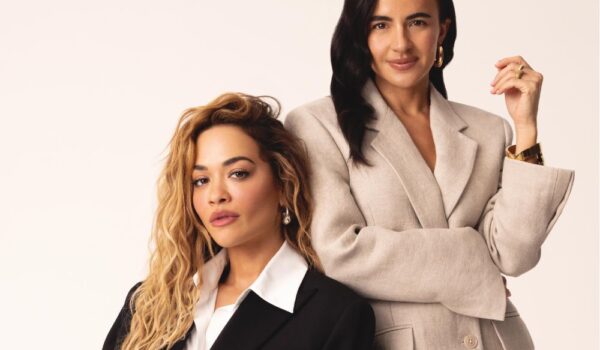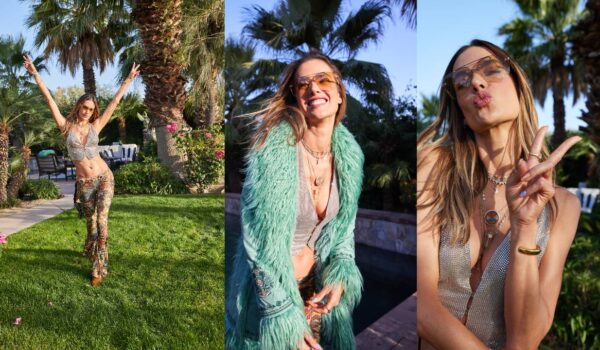When I say Fifty Shades of Grey, I’m not referring to the bestselling book, but the rite of passage which is turning grey, something everyone faces at some point in their lives.
And although there are people who simply accept it as an inevitable stage we have to go through, and don’t seem to be too bothered, for others finding your first grey can come as quite a shock; it’s an obvious sign to everyone that you are not as young as you once were.
The age at which you will turn grey depends largely on your genetic makeup. If your parents were late developers, the good news is you can probably expect the same good fortune, but if they both went grey young, there’s a very good chance that will also be your fate. For most people, however, it will happen in their thirties or forties. The colour of your hair also determines how grey, or white, it will turn. If you are a blonde, redhead or a light brunette, for example, you are more likely to go grey, and if you are a deep brunette or have black hair, you have a better chance of turning white – that’s me.
There are a number of myths surrounding grey hair, one of which is that if you pull a grey hair out by the roots, two will grow back in its place out of spite. Scary thought, but not true! Another is that your hair has turned grey because it isn’t healthy anymore, but the lack of colour happens only because the pigment cells in the hair base at the roots of the hair stop producing melanin. Any colour of hair can be unhealthy, including grey, but reasons for this can include illness and a poor lifestyle including diet, not the grey itself.
Finally, if you are alarmed that your unwelcome, colourless strands are springing away from your head at strange angles, this also isn’t a sign that your hair is damaged, unhealthy, or getting you back for something you did in your recent past. It’s just that grey hair can be more coarse and wiry than pigmented hair.
When grey hairs appear, some women choose to embrace the change of look and even play up the silver fox style, as not all shades of grey are equal. If this isn’t you, however, covering them up is an option. Richard Ward, one of the UK’s leading celebrity stylists, says that 40-something hair can be a mixture of coarser grey and finer, smoother pre-grey as well as pigmented hair.
“Sometimes the coarse, curly grey hairs can show very noticeably due to this, but there are a number of options for covering them depending on the percentage of greys,” he says. “It’s normally better to ensure they are tackled with highlights and lowlights, but reverse lights also work well. This is where the hair is coloured and softened around the face-framing area with a contrast of colour from the same hues. Cool or blue-based tones start to look harsher and more unflattering, whereas warmer or golden-based tones are far more skin-enhancing, and lighten and soften features.”
Using colour can also bulk up finer, lifeless hair, and the chemical process can contribute to drying out oily hair, which for some may be a bonus. But what if your hair is excessively grey? “Once hair is over fifty per cent grey, women should go towards a newly lightened base rather than hankering after their sultry, dark teenage natural colour,” Ward recommends. “Go for softer, blonde tones that look more of a natural fit with your newly whiter hair. Felicity Kendall, Joanna Lumley and Lulu are good examples of this. Opting for light creamy caramel bases and pale cream lights to soften and frame the face.” Other options include glosses, permanent and semi-permanent colour.
The Long And The Short Of It
The right cut for your face shape and hair texture is important at any age if you want to have fabulous hair, but as you age there are other considerations to remember. One is your lifestyle – if you are a super busy mother, or a career woman, or both, a fussy style which needs daily attention, or takes a long time to get right just won’t work in the long term. Another challenge is achieving a hair style which isn’t too harsh, and instead flatters an older face. “Avoid severe cuts like Pobs, that’s a Posh Spice bob, or straight lines,” says Ward. “Instead, the key is softening your looks so it flatters your face. Texture is the key, soft, choppy layers and cuts with movement and volume work best.”
One subject surrounding 40-something hair which is guaranteed to get both women and stylists heated, however, is whether or not the time has come for women with long hair to go for the dreaded ‘chop’. I love my long hair, but in recent years I have taken a bit off the length, and added more layers. But what do our experts think?
- Reyna Xydis’s View: “One mistake women make when they hit their forties is cutting their hair short. There are some women who look incredible with a short, urchin-type cut, but I love long on women, full-stop. Long hair on women is sexy, but long doesn’t have to be halfway down your back. You can have shoulder length hair that gives the perception of being longer, but is layered and textured. I believe that if a mature woman does want long hair, it should be in a style that compliments the length. There is truly nothing more unattractive than a woman on to long, scraggly, unkempt hair – why?”
- Richard Ward’s View: “Once a woman reaches her forties, she normally feels obliged to ditch the long hair she has coveted since her teens. This decade tends to be a real turning point for women who feel a pressure to go shorter. In general, however, hair past shoulder length does start to look a bit straggly and unflattering as we age, so it’s best to go for a soft, layered take on a traditional long look, but keep it above shoulder length to stay looking healthy and lustrous. Think Madonna and Elle Macpherson’s shorter versions of their once trademark manes.”
This is an extract from Joanna E. Hall’s e-book 40 and Still Fabulous: The Next Chapter. Buy the book here.










